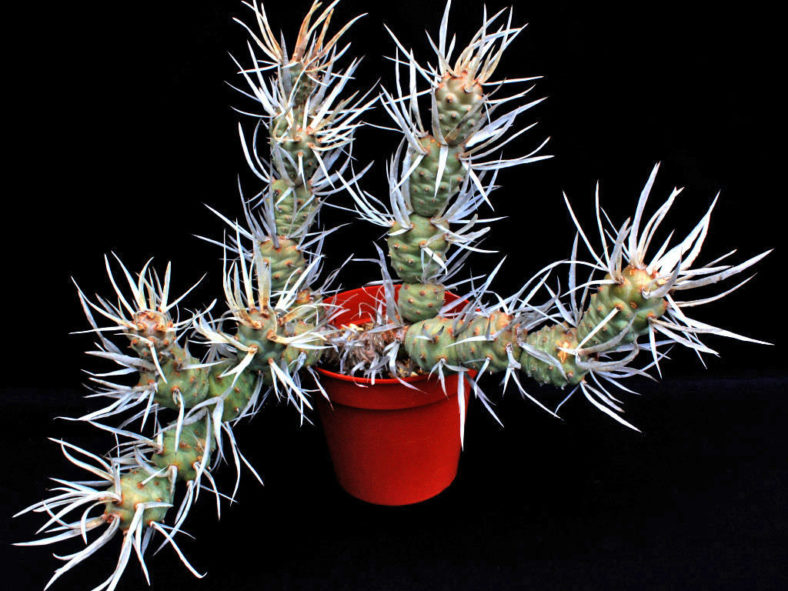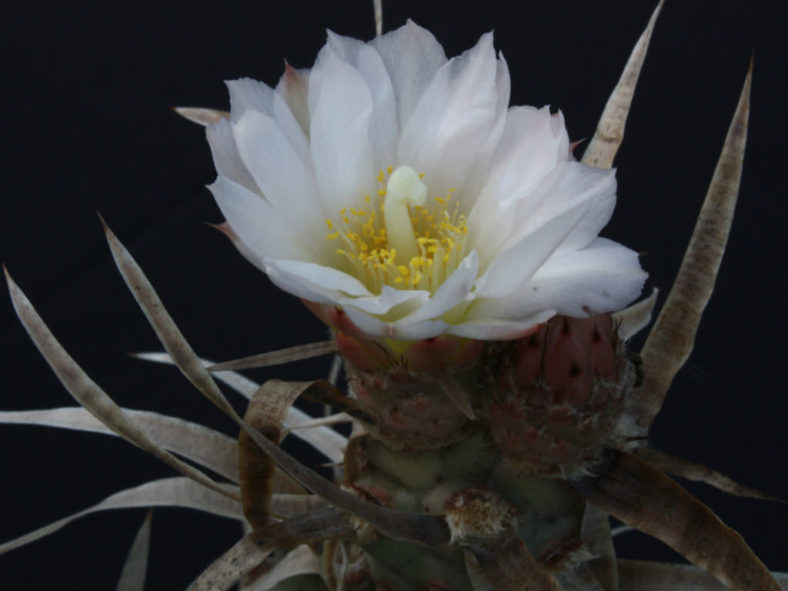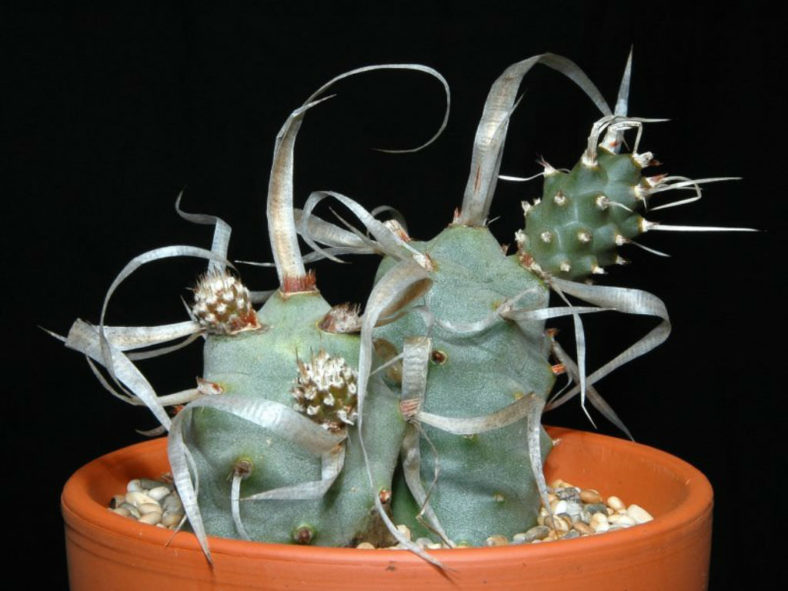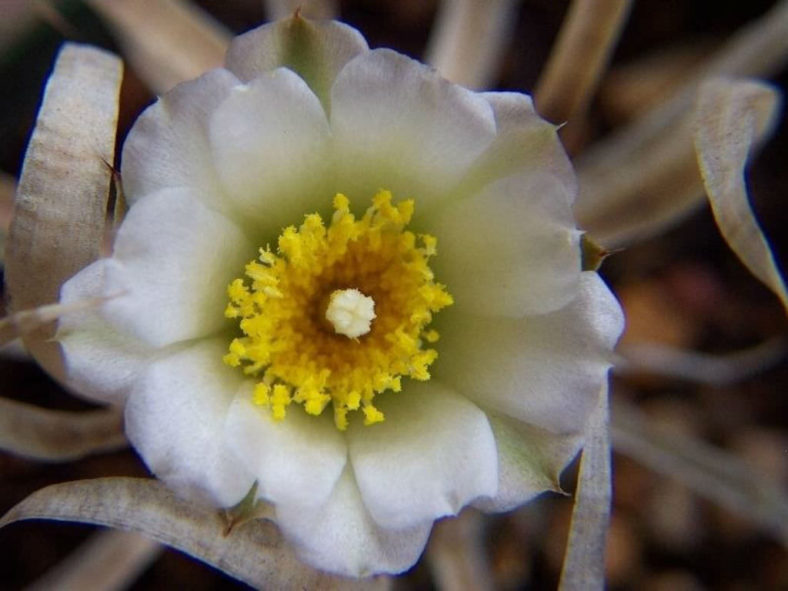Scientific Name
Tephrocactus articulatus var. papyracanthus (Phil.) Backeb.
Accepted Scientific Name
Tephrocactus articulatus (Otto) Backeb.
Common Name(s)
Paper Spine Cactus, Paper Spined Cholla
Synonym(s)
Tephrocactus papyracanthus, Opuntia papyracantha
Scientific Classification
Family: Cactaceae
Subfamily: Opuntioideae
Tribe: Tephrocacteae
Genus: Tephrocactus
Etymology
The varietal epithet "papyracanthus" (pronounced "pap-ih-ra-KAN-thus") means "paper-spined, having papery spines" and refers to the stems of this variety, which have papery spines.
Origin
Tephrocactus articulatus var. papyracanthus is native to western Argentina. It is not recognized as a separate variety and is treated as a synonym of Tephrocactus articulatus.
Description
Tephrocactus articulatus var. papyracanthus is a slow-growing, bushy cactus with segmented stems adorned with remarkable, papery spines. It can grow up to 12 inches (30 cm) tall. The little segments are pinecone-shaped, loosely attached, and fall easily.
The flowers are bell-shaped, white with a yellow center, and can reach a diameter of up to 1.6 inches (4 cm).

How to Grow and Care for Tephrocactus articulatus var. papyracanthus
Hardiness: USDA hardiness zones 8b to 10b: from 15°F (-9.4°C) to 40°F (4.4°C).
The large variety of species within the Opuntia genus means different types of Prickly Pears may need slightly different care. All are desert cacti that require a lot of sun, ample light, and very little water. If you live in a hot, arid area, these plants can generally be planted outside, left alone, and enjoyed without additional care.
These cacti will grow just fine in a garden, but they can also be grown in pots. To repot, ensure the soil is dry, remove the pot, and remove the old soil. After treating any cuts with fungicide, place the cactus in a new pot and backfill it with potting soil. As with a new cutting, ensure not to water a newly repotted Prickly Pear briefly to avoid rotting its roots.
Opuntia can propagate either by cuttings or by seed. To propagate by cuttings, sever pads from a plant and allow them to dry, allowing the wounds to heal. Then, place the plants in dry soil and refrain from watering them until they begin to grow, to avoid rotting.
See more at How to Grow and Care for Opuntia.
Links
- Back to genus Tephrocactus
- Succupedia: Browse succulents by Scientific Name, Common Name, Genus, Family, USDA Hardiness Zone, Origin, or cacti by Genus
Photo Gallery
Click on a photo to see a larger version.


